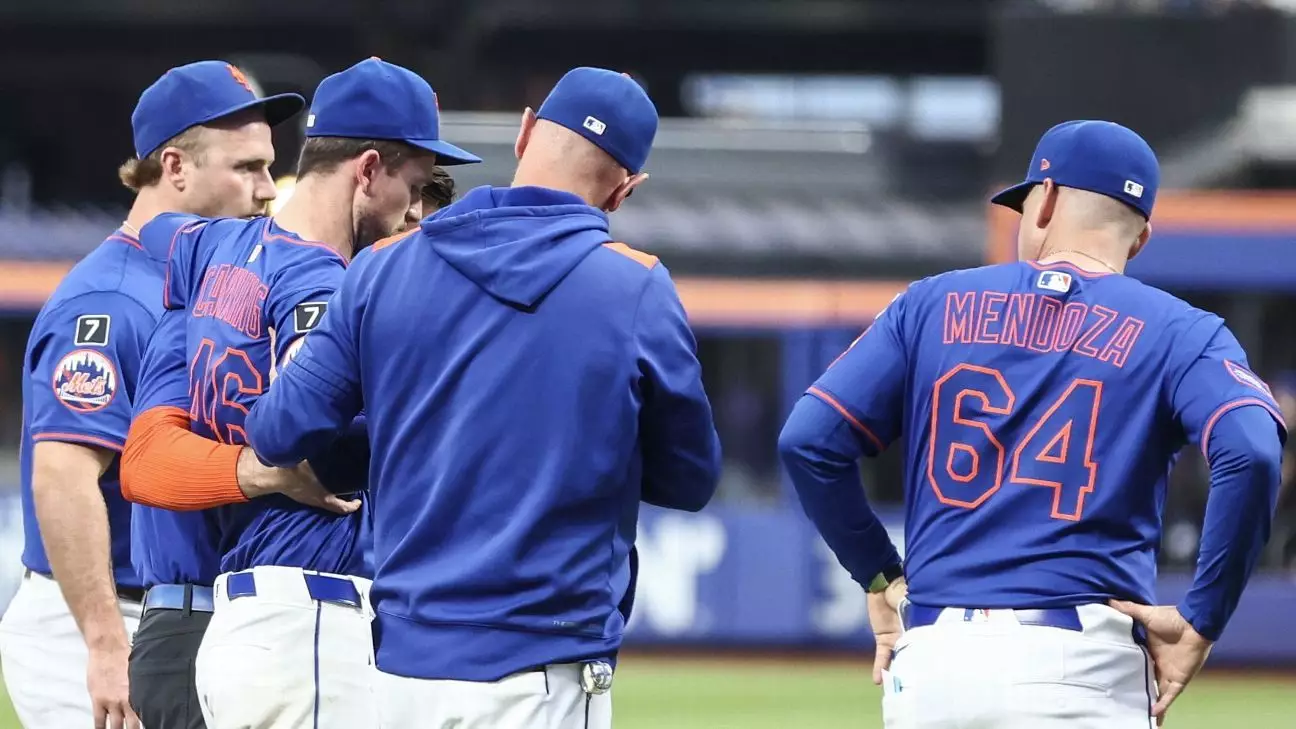The New York Mets are grappling with a profound pitching crisis that underscores the fragility of their rotation and the urgent need for strategic resilience. The recent injury to right-hander Griffin Canning, who likely suffered an Achilles injury during a routine play, compounds what has already become a dire situation for the team’s staff. This injury isn’t just another setback; it intensifies the vulnerability of a rotation that has lost several key starters to significant ailments in a remarkably short timeframe. Canning’s situation exemplifies the Mets’ broader dilemma: a confluence of unfortunate injuries, mounting pressure, and the tough reality that the team’s margin for error is rapidly shrinking.
Canning’s injury, which appeared to occur as he broke toward the infield on what seemed to be a non-contact ground ball, was immediately telling. His inability to continue—a limp off the field supported by trainers—signaled the severity of the damage. The questions this raises are not merely about who will fill the void but how this shake-up will influence the Mets’ competitive trajectory. The team has announced that Canning will undergo an MRI, but the prognosis, even before official confirmation, suggests a lengthy sidelining that will further deplete the rotation’s depth.
The Domino Effect of Injuries: A Rotation on the Brink
Canning is, unfortunately, the third starter from the Mets’ Opening Day rotation to succumb to injury in recent weeks. The absence of ace Kodai Senga with a right hamstring strain and Tylor Megill’s right elbow sprain has already stretched the pitching resources thin. Additionally, left-hander Sean Manaea, who was anticipated to return soon from an oblique injury, has been set back by a bone chip in his elbow, delaying his comeback indefinitely. The cumulative effect of these injuries cannot be overstated. Each lost starter chips away at the team’s reliability on the mound, heightening the risk of further erosion in performance and team morale.
The Mets’ record over this injury-riddled stretch—4 wins and 10 losses—reflects the direct impact of these absences. With vital arms sidelined, opponents have found increased opportunities to capitalize, exposing weaknesses that may have otherwise remained masked by the presence of a healthy, stable rotation. The organization’s challenge now extends beyond managing current health issues to preventing a snowball effect that could derail playoff ambitions.
The Quandary of Recovery and Reinforcement
Despite the bleak injury landscape, the Mets have shown glimmers of hope with reinforcements beginning to reemerge. Frankie Montas made a notable return, delivering a five-inning, scoreless outing shortly after recovering from a lat injury. However, Montas’s successful comeback is far from a cure-all. The team’s management, including manager Carlos Mendoza and president of baseball operations David Stearns, must now navigate a delicate balancing act: expediting recoveries without risking re-injuries, while simultaneously seeking immediate pitching support through temporary or longer-term roster moves.
Mendoza’s candid reflections on the state of their rotation reveal the psychological dimension of this crisis. His recognition of Canning’s consistent performance and the emotional weight of seeing him hurt highlight the human side of baseball’s physical toll. This situation demands not only physical resilience but also mental toughness from a squad whose pitching corps is under relentless duress.
Is There a Silver Lining or Just More Challenges Ahead?
Injuries often force teams to innovate or dramatically alter their strategies. For the Mets, these challenges might accelerate internal development of younger arms or motivate managerial adaptations such as modifying starting rotations and bullpen usage. The team’s ability to creatively utilize its available resources could very well dictate whether this tough patch translates into a temporary setback or a full-blown crisis.
Yet, the downside risk remains daunting. If the injury trends persist and key players are sidelined longer than anticipated, the Mets risk squandering a season with immense potential. There is a notable disparity between Canning’s current season form—a respectable 7-3 record and a 3.77 ERA—and his prior struggles with the Angels, illustrating the impact a healthy pitcher can have on this team’s prospects.
At its core, the Mets’ predicament emphasizes a familiar truth in sports: no star or strategy can fully mitigate the unpredictability of injuries. However, leadership’s proactive approach to managing health, combined with a willingness to embrace unconventional solutions, may yet turn adversity into an opportunity to build a more adaptable and resilient team in the long run.

